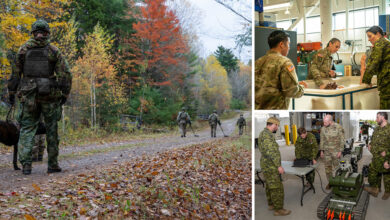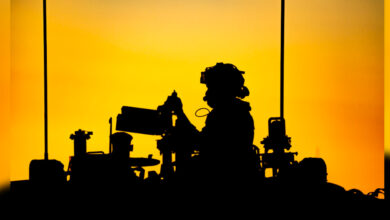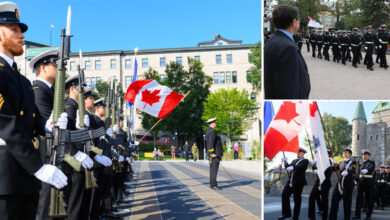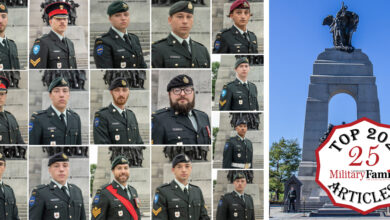Duty CallsUncategorized
Final Flight Safety Investigation Report on March 2017 Search and Rescue Technician Accident
Today, the Department of National Defence’s Airworthiness Investigative Authority released the final report regarding the tragic Search and Rescue (SAR) Technician accident on March 8, 2017, near Yorkton, SK, resulting in the loss of MCpl Alfred Barr.
According to the report the accident happened during a 435 (Transport and Rescue) Squadron CC130H Hercules Search and Rescue training mission. When the aircraft left Winnipeg, there was a crew of nine people, and they were on their way to the Pelly/Kamsak area of Saskatchewan. They were to complete a basic Search and Rescue sequence, then proceed to the Yorkton airport to do live static line parachute jumps followed by supply drops.
The sky was clear, and it was a crisp -16 degrees, and they were flying 2,000 feet above ground, going at 124 knots airspeed. After the briefings and safety checks were complete, the Search and Rescue Team Lead exited the aircraft first through the rear exit of the plane. Barr exited the aircraft shortly after.
Immediately after Barr had exited the aircraft, he appeared to have gotten caught in the aircraft’s slipstream. This caused his leg to move upwards, and his body rolled to the right. At this point, his static parachute line began to deploy his main parachute. The parachute failed to deploy normally, causing his main canopy lines to become severely twisted. His parachute then became uncontrollable and rapidly descended in a clockwise spiral.
It was observed that Barr attempted to untangle his lines and released his Search and Rescue – Personnel Equipment Lowering System bag in an effort to aid with the required kicking motion of his legs. Barr was unsuccessful in his attempts, and it’s possible he had lost situational awareness of his altitude and descent rate while trying to untangle his lines. Resulting in the fact that he never attempted to cut away his lines and deploy the reserve chute before reaching the ground.
Barr was fatally injured when he reached the ground.
There were no findings of an improper pack or material failure of Barr’s equipment. When a malfunction occurs during a parachute jump at lower altitudes (1,500 to 2,000 feet above ground), leave little time for error and action needs to be taken quickly to resolve the problem or cut the lines and deploy the reserve chute.
As a result, measures have been taken to further enhance the training process and the implementation of an automatic altitude awareness aural warning device.
Barr was originally from Lethbridge, AB. He joined the military in 2010 and started out as a Signal Operator and eventually worked his way up to SAR Tech, graduating in the summer of 2016.
Master Corporal Barr’s family has requested privacy at this time.










